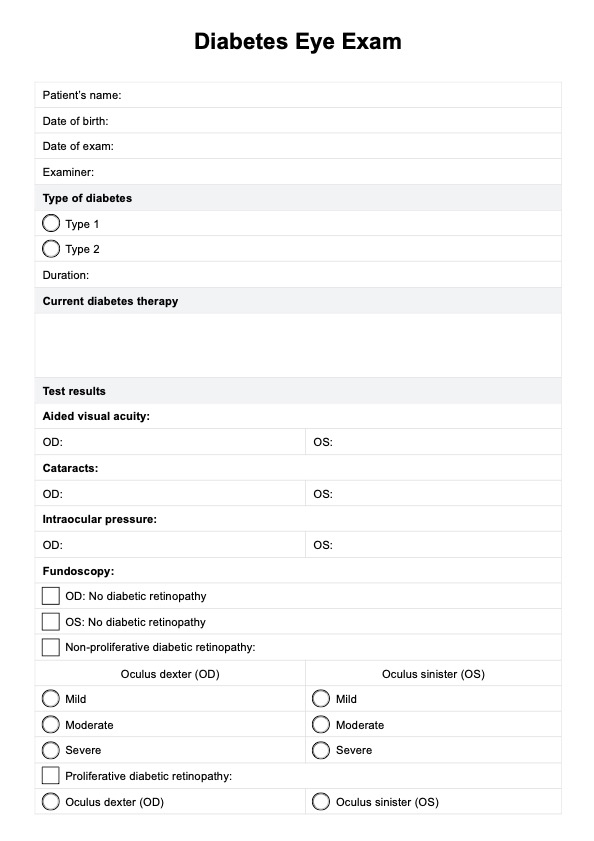A diabetic eye exam includes a comprehensive evaluation of the retina, blood vessels, and optic nerve using specialized tools like retinal imaging and dilation. It focuses on detecting conditions like diabetic retinopathy, macular edema, and glaucoma.

Diabetes Eye Exam
Download Carepatron's free PDF template for a Diabetes Eye Exam to ensure thorough monitoring and care for diabetic patients' eye health.
Use Template
Diabetes Eye Exam Template
Commonly asked questions
A routine eye exam assesses overall vision and eye health, while a diabetic eye exam specifically looks for diabetes-related eye conditions. The diabetic exam involves more detailed retinal imaging and pupil dilation.
Signs include blurred vision, floaters, dark areas of vision, and difficulty seeing colors. Persistent symptoms should prompt an immediate visit to an eye doctor.
EHR and practice management software
Get started for free
*No credit card required
Free
$0/usd
Unlimited clients
Telehealth
1GB of storage
Client portal text
Automated billing and online payments











